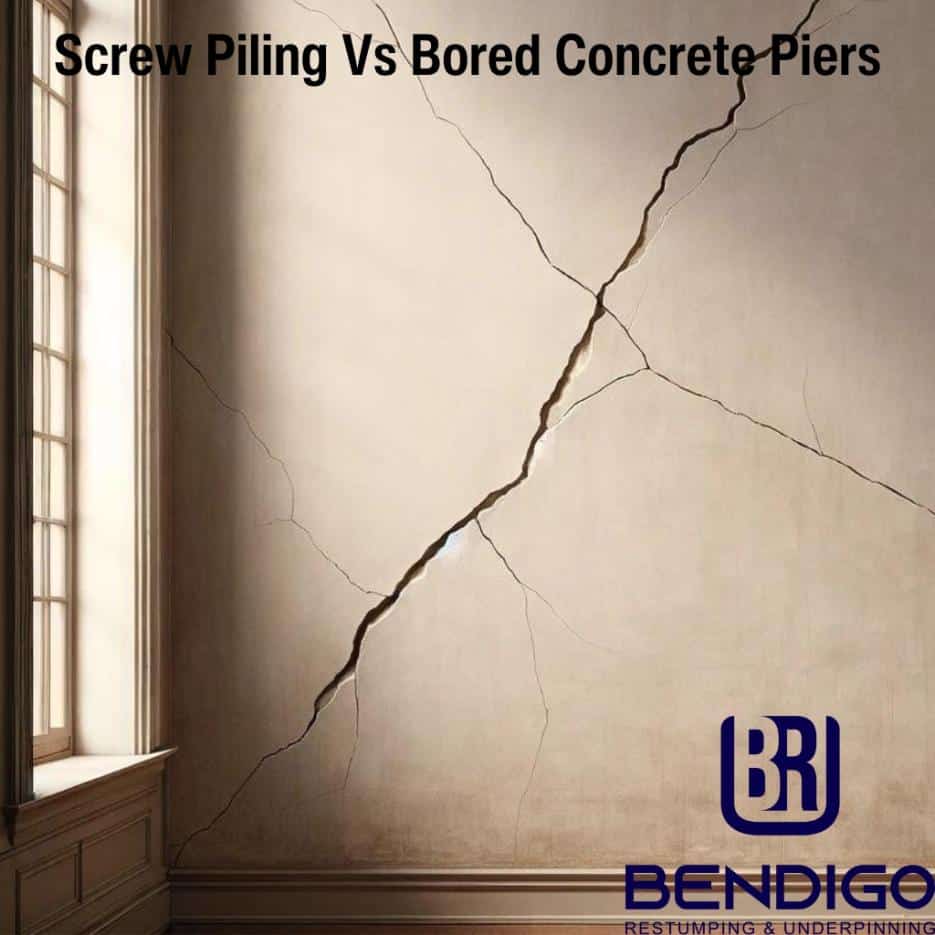Screw piling and bored concrete piers are two unique foundation techniques used in construction. In screw piling, helical piles are inserted directly into the ground, providing a quick and efficient way to install them.
On the other hand, bored concrete piers give users a more solid and enduring foundation, albeit requiring more time to complete. Bored concrete piers are particularly suited for heavy structures.
In this blog, we’ll expand on the differences and the use cases between screw piles and bored concrete piers and how they are used for foundation repairs.
What Are Screw Piles?
Screw piles are specialised deep foundation elements designed for soil insertion to support structures. Their key features include the following:
- Helical shape: Equipped with helical plates on the shaft, allowing for straightforward soil penetration and anchoring.
- Load capacity: Capable of bearing heavy loads, ideal for a variety of construction projects.
- Installation speed: Quick to install, they cause minimal site disruption.
- Versatility: Compatible with a broad spectrum of soil types and construction situations.
- Environmental impact: Offer a reduced ecological footprint compared to traditional piling methods.
- Cost-effectiveness: Generally more economical, owing to lower labour and equipment requirements.
What Are Bored Concrete Piers?
Bored concrete piers are deep foundation components formed by drilling into the ground and filling the holes with concrete. Their notable features are the following:
- Deep foundation: Access deeper soil layers, providing improved stability.
- Load-bearing capacity: High capability to support heavy structures.
- Durability: Resilient against soil movement and environmental elements, ensuring longevity.
- Customisable size: Depth and diameter can be adjusted to meet specific site needs.
- Reduced vibration: Their installation process generates minimal vibration, minimising potential damage to surrounding structures.
- Soil adaptability: Effectively functional in various soil conditions, particularly in areas with varying soil consistency at different depths.
What is the Difference Between Screw Piles and Bored Concrete Piers?
The main difference between screw piles and bored concrete piers lies in their installation techniques and suitability for varying soil types, a vital consideration in basement foundation construction.
Screw piles are screwed into the ground, a method that speeds up the process and minimises disruption. They excel in softer soils and are lauded for their installation ease.
Conversely, bored concrete piers are created by drilling deep holes and pouring concrete into them. Though more labour-intensive and requiring thorough site preparation, this method is better suited for heavy structures and diverse soil conditions.

When Should I Use Screw Piles?
You need to use screw piles in softer soil conditions or when you need to perform a quick and less invasive installation. Screw piles are preferred by environmentally sensitive areas and jobs where minimal ground disturbance is crucial.
When Should I Use Bored Concrete Piers?
You use bored concrete piers in situations requiring deep foundations with high load-bearing capacity. They are also ideal for construction projects where long-term resistance to ground movement is needed.

